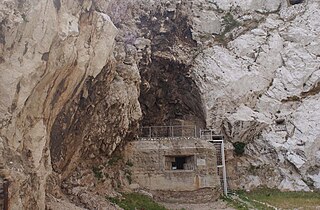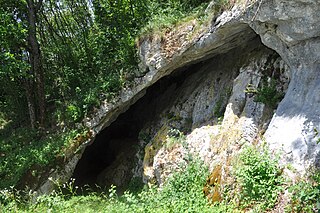Mettmann is a Kreis (district) in the middle of North Rhine-Westphalia, Germany. Neighboring are the Ennepe-Ruhr, Rhein-Kreis Neuss, Rheinisch-Bergischer Kreis and the district-free cities Cologne, Leverkusen, Wuppertal, Solingen, Düsseldorf, Duisburg, Mülheim, Essen. It is the most densely populated rural district in Germany; it borders Düsseldorf Airport in the northwestern district borders, on the city limits of Ratingen, and is also near Cologne Bonn Airport. It was named after Mettmann, its district seat.

Joachim Neander was a German Reformed (Calvinist) Church teacher, theologian and hymnwriter whose most famous hymn, Praise to the Lord, the Almighty, the King of Creation has been described by John Julian in his A Dictionary of Hymnology as "a magnificent hymn of praise to God, perhaps the finest creation of its author, and of the first rank in its class." Due to its popularity it has been translated several times into English—Catherine Winkworth being one of the translators in the 19th century—and the hymn has appeared in most major hymnals.

Mettmann is a town in the northern part of the Bergisches Land, in North Rhine-Westphalia, Germany. It is the administrative centre of the district of Mettmann, Germany's most densely populated rural district. The town lies east of Düsseldorf and west of Wuppertal.

Erkrath is a town in the district of Mettmann, in North Rhine-Westphalia, Germany.

Johann Carl Fuhlrott was an early German paleoanthropologist. He is famous for recognizing the significance of the bones of Neanderthal 1, a Neanderthal specimen discovered by German laborers who were digging for limestone in Neander valley in August 1856. Originally disregarded, Fuhlrott, to his eternal credit, had the insight to recognize them for what they were: the remains of a previously unknown type of human.

The Steinheim skull is a fossilized skull of a Homo neanderthalensis or Homo heidelbergensis found on 24 July 1933 near Steinheim an der Murr, Germany.

Feldhofer 1 or Neanderthal 1 is the scientific name of the 40,000-year-old type specimen fossil of the species Homo neanderthalensis, discovered in August 1856 in a German cave, the Kleine Feldhofer Grotte, in the Neandertal valley, 13 km (8.1 mi) east of Düsseldorf. In 1864, the fossil's description was first published in a scientific magazine and officially named. Neanderthal 1 was not the first Neanderthal fossil discovery. Other Neanderthal fossils had been discovered earlier, but their true nature and significance had not been recognized, and, therefore, no separate species name was assigned.

Hermann Schaaffhausen was a German anatomist, anthropologist, and paleoanthropologist.

Two fossil crania were discovered along the Aniene River Valley of Northern Rome, Italy in 1929 and 1935. The two human skulls that derive from Homo neanderthalensis were located in a quarry along the Aniene River in gravel and sand beds that have since been replaced by building areas with the city. From geomorphological classification, the two skulls were assigned to the Tyrrhenian stage due to their location within a small hill approximately 5 meters above the river. The area in which they were found at the time was called Saccopastore, which is where these two crania get their name. The first Saccopastore skull, discovered by Sergio Sergi, and the second Saccopastore skull, discovered by Professors Henri Breuil and Alberto Carlo Blanc, both show greater basicranial flexion compared to those of the Wurmian Neandertals, due to the extreme inclination of the planum sphenoidalis. The skulls' ages likely ranges from 100,000 to 300,000 years, and they show an extremely high level of fossilisation. After being discovered, the skulls were kept at the Institute of Anthropology of the University of Rome until World War II, when they were taken by Professor Sergio Sergi to be preserved and kept safe from German officers who were seeking fossil treasures. After a time, they stayed with Sergi and became part of his own private collection.

Kleine Feldhofer Grotte was a karstic limestone cave and a paleoanthropologic site in the Neander Valley in western Germany. In August 1856, the Neanderthal type specimen was unearthed from the cave. Miners uncovered a skull cap and a number of skeletal bones to be labeled Neanderthal. The bones belong to at least three distinct individuals.

Neanderthals are an extinct group of archaic humans who lived in Eurasia until about 40,000 years ago. The type specimen, Neanderthal 1, was found in 1856 in the Neander Valley in present-day Germany.
Neanderthal, or Neandertal, was a species of the genus Homo that inhabited Europe and parts of western Asia.

Gibraltar 1 is the name given to a Neanderthal skull, also known as the Gibraltar Skull, which was discovered at Forbes' Quarry in Gibraltar. The skull was presented to the Gibraltar Scientific Society by its secretary, Lieutenant Edmund Henry Réné Flint, on 3 March 1848. This discovery predates the finding of the Neanderthal type specimen.

Forbes' Quarry is located on the northern face of the Rock of Gibraltar within the Upper Rock Nature Reserve in the British Overseas Territory of Gibraltar. The area was quarried during the 19th century to supply stone for reinforcing the fortress' military installations. In the course of the quarrying, a limestone cave was found. The second ever Neanderthal discovery was made within this cave when Cpt. Edmund Flint found the skull of an adult female Neanderthal in 1848.
Gibraltar 2, also known as Devil's Tower Child, represented five skull fragments of a male Neanderthal child discovered in the British Overseas Territory of Gibraltar. The discovery of the fossils at the Devil's Tower Mousterian rock shelter was made by archaeologist Dorothy Garrod in 1926. It represented the second excavation of a Neanderthal skull in Gibraltar, after Gibraltar 1, the second Neanderthal skull ever found. In the early twenty-first century, Gibraltar 2 underwent reconstruction.

The Neanderthals in Gibraltar were among the first to be discovered by modern scientists and have been among the most well studied of their species according to a number of extinction studies which emphasize regional differences, usually claiming the Iberian Peninsula partially acted as a “refuge” for the shrinking Neanderthal populations and the Gibraltar population of Neanderthals as having been one of many dwindling populations of archaic human populations, existing just until around 42,000 years ago. Many other Neanderthal populations went extinct around the same time.

Neanderthal station is a Rhine-Ruhr S-Bahn station in the town of Mettmann in the German state of North Rhine-Westphalia. It was opened on 15 September 1879. It is located in the Neandertal, which prior to the German spelling reform of 1901 was spelled as Neanderthal.

Scladina, or Sclayn Cave, is an archaeological site located in Wallonia in the town of Sclayn, in the Andenne hills in Belgium, where excavations since 1978 have provided the material for an exhaustive collection of over thirteen thousand Mousterian stone artifacts and the fossilized remains of an especially ancient Neanderthal, called the Scladina child were discovered in 1993.

Betal Rock Shelter, a karst cave located on the south-eastern edge of the Lower Pivka river valley on a slope just above the road from Postojna to Bukovje is a site where rich cultural sediment layers with remains of stone tools, artifacts, and numerous fossilized bones of contemporary animals were found. Its entrance was formed by the collapse of the 174 m (571 ft) long cave's ceiling, carved out by the waters of the Pivka River.

The archaeological site of Atapuerca is located in the province of Burgos in the north of Spain and is notable for its evidence of early human occupation. Bone fragments from around 800,000 years ago, found in its Gran Dolina cavern, provide the oldest known evidence of hominid settlement in Western Europe and of hominid cannibalism anywhere in the world.

















